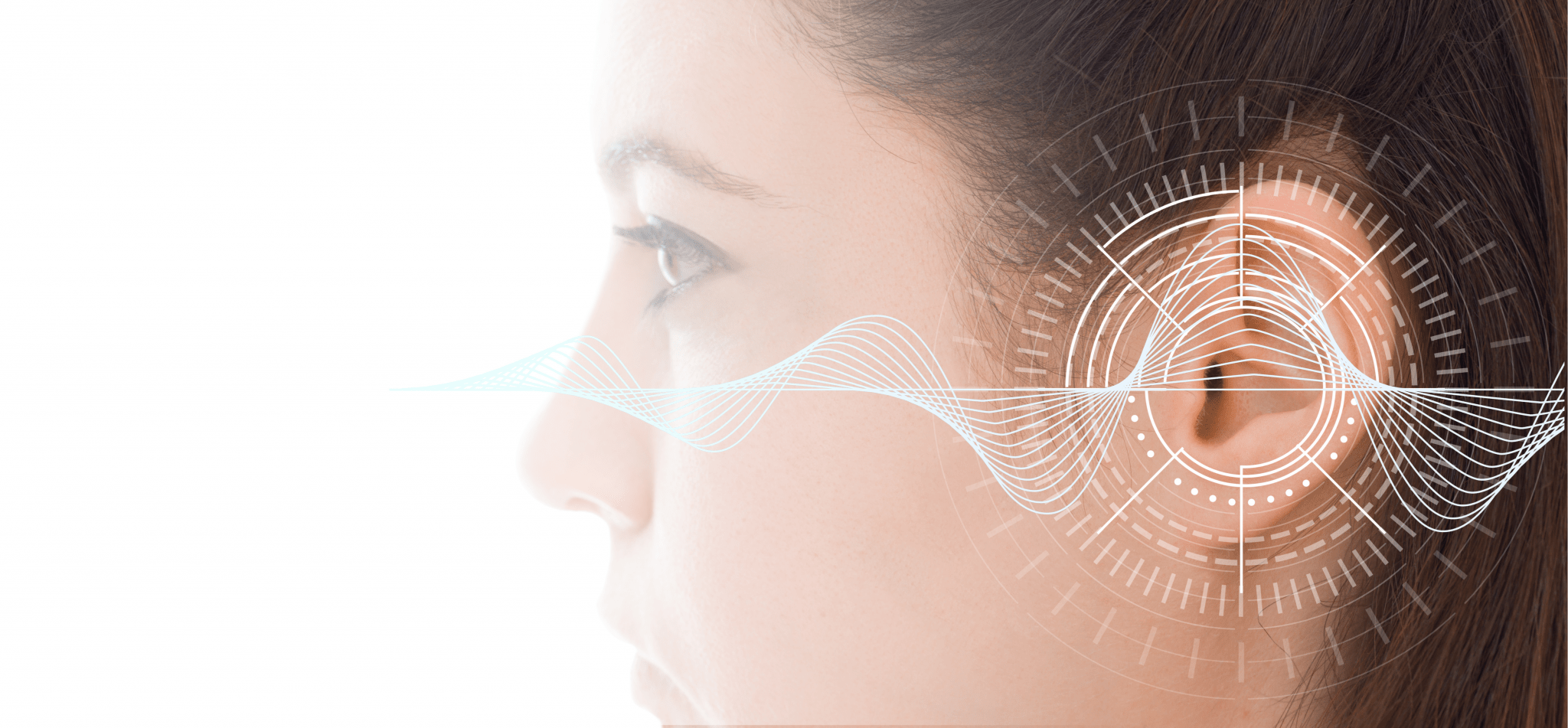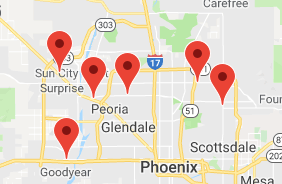
Updated: October 19, 2018
Being hearing impaired can make the world feel lonely and hard to navigate, but hearing aids can make that world more comfortable to live in for the 30 million Americans who suffer from hearing loss. With rapid advances in technological & professional care, more patients are achieving higher levels of satisfaction with hearing devices than ever before.
What Is a Hearing Aid?
The first thing you may be asking yourself is what are hearing aids or how do they work? Hearing aids are tiny electronic devices that people with hearing loss can wear in or behind their ears. These devices make it easier for those people to participate in daily life, including listening to lectures, having conversations, watching television and understanding people more easily in crowded or noisy places.
Hearing aids have four main components: a speaker, an amplifier, a sound processor and a microphone. The microphone receives the sound and converts it to an electrical signal that travels to the processor, which measures sounds and adjusts them up to 500 times per second based on the individuals hearing loss, the direction of the sounds, the speech and noise levels in the environment and the types of sound. This optimized sound is then sent to the amplifier which makes the signals louder and transmits it through the speaker. In this way, sound is amplified to uniquely enhance the user’s hearing.
What Are the Different Types of Hearing Aids?
The two most common types of hearing aids are behind-the-ear and in-the-ear. The most common type of behind-the-ear hearing aid is a receiver in the ear model. This hearing aid fits above the ear and has a very thin wire extending from the instrument to a small receiver or speaker placed inside the ear canal. The technical specifications of the hearing aids, the strength of the receivers, and the type of cover over the receiver can make these appropriate for all types of hearing loss. These are known for being cosmetically inconspicuous and physically very comfortable. They are also typically very easy to maintain.
In-the-ear or custom hearing aids fit inside the outer ear and ear canal and can work for mild to severe hearing losses. A custom 3D printed shell holds the electronics in place. The hearing aids can be Full Shell filling up the entire outer ear, in the canal (ITC) fitting at the opening to the ear canal or invisible in the canal (IIC) recessed past the entrance to the canal. These types of hearing aids tend to be harder to adjust and do not have much space for added features. Because of their size, they also have lower volume and less power, so they aren’t recommended for people with more severe hearing losses. Custom models are also most appropriate for adults since children will need to replace them often as their ears grow.
What Are the Available Options for Hearing Aids?
One popular feature in the larger custom styles and almost all behind-the-ear aids is a telecoil, which allows users to hear sound through circuitry instead of a microphone. This is helpful in public places that are designated as “looped for the hearing impaired.”
Directional microphones that can automatically detect the strongest speech source and focus the amplification in that direction are also quite common and beneficial.
Many of today’s hearing aids will connect via Bluetooth to a wearer’s smart cell phone. Hearing aids can be the Bluetooth earpieces for the cell phone and the cell phone can be a remote control for the hearing aids. This makes hearing aids part of an entire communications system. No matter which style of hearing aid you choose, they work differently depending on their electronic components. Some are very sophisticated, very customizable, very fast computer processors while others are much more basic in their technological abilities.
Rechargeable batteries and a charging base are very helpful as well.
How Do I Know If I Need Hearing Aids?
An audiologist can evaluate your ears and your hearing loss. If there is a hearing loss, they can determine whether or not the hearing loss is of a type called conductive or sensorineural. The conductive, more atypical, types of hearing losses warrant an evaluation by an ENT or otolaryngologist. At times, there are medical/ surgical options for correcting these hearing losses. If your hearing loss is of the type called sensorineural it is best addressed with amplification and it is the audiologist’s role to help you through this process.
How Do I Know Which Hearing Aids Will Best Meet My Needs?
The selection of hearing aids is based on many factors. Your hearing loss, your listening environments, physical dexterity and visual acuity are all considered when hearing aids are selected. Other factors you and your audiologist will consider include budget, cosmetic style and optional features and accessories. Audiologists will take the time to help you determine your best choices.
How Quickly Will I Adjust to My Hearing Aids?
The amount of time it takes to adjust to a hearing aid depends on the person. Wearing them regularly will help you become accustomed to them as quickly as possible. Some people are very comfortable with their hearing aids from almost the very first moment. Others take a few weeks to settle in with them. The audiologists will see you on a regular basis during your adjustment period to help you along with the process. Your audiologist will also be available if you should encounter any difficulties with the hearing aids.
How Do I Care for Hearing Aids?
Your audiologist will walk you through the cleaning and care process for your specific hearing aid, but there are a few things you can keep in mind. Remember to clean them according to the manufacturer’s instructions each time and take care to keep them away from excessive earwax, moisture, and heat. Avoid using hair care products while wearing your hearing aid as well. Unless you have a rechargeable system, remember to turn them off when not in use to preserve the battery and replace dead batteries as soon as possible.
What is the cost of hearing aids?
Since there is such a broad range of options and styles available, that question is impossible to answer without knowing the specifics of your situation. While some health insurance companies will cover the devices, most do not. Financing and payment plans are commonplace. For those who are in financial need, there are other options as well. There are organizations that provide used or refurbished hearing aids for those in need.
If you suspect that you have hearing loss, don’t wait to see an audiologist. Research studies have documented that the longer a hearing loss is left untreated, the greater the risk there is of developing dementia.
We urge you to reach out to the nearest Metro Hearing office to learn more about how we can help you rejoin the wonderful world of sound.

